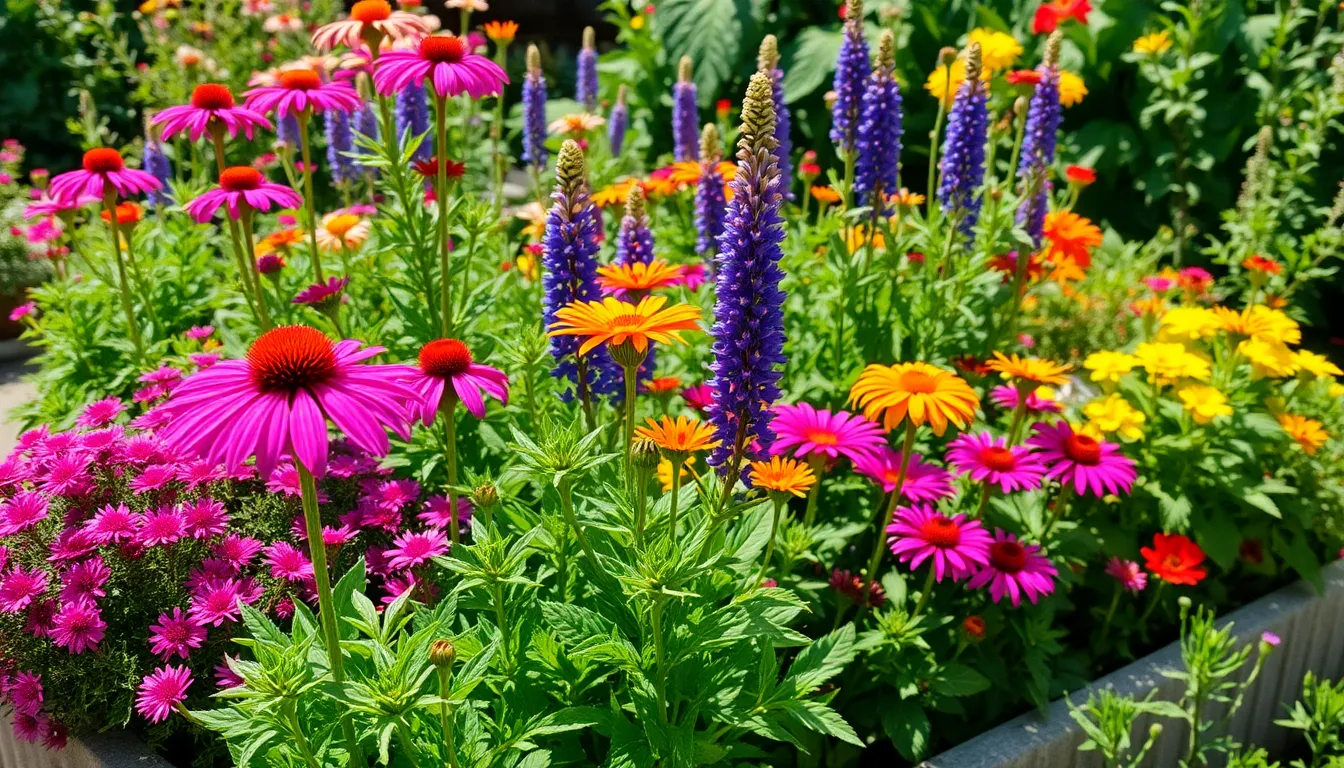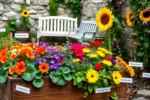Ah, summer—the season when gardens burst into life, filling the air with vibrant colors and intoxicating scents. Whether you’re planting your very first garden or you’re a seasoned green thumb, exploring the best outdoor plants for summer is an exciting journey that promises joy and satisfaction. This guide is designed to inspire and equip you with the knowledge to transform your outdoor space into a thriving oasis.
In this carefully curated list, you’ll discover plants that not only withstand the summer heat but thrive in it, bringing beauty and vitality to your garden. From show-stopping blooms to lush foliage, each selection has been chosen for its resilience and ease of care, ensuring you can spend more time enjoying your garden and less time tending to it. By incorporating these plants into your landscape, you’ll find yourself rewarded with a garden that not only survives the summer but truly flourishes.
Dive in with confidence, knowing that with the right plants and a few practical tips, your summer garden can become a source of pride and pleasure. As you embark on this gardening adventure, prepare to be amazed by the transformative power of nature and your own ability to nurture it. Let the magic of summer gardening bring endless delight to your home, heart, and hands.
Sun-Loving Marigolds (Pest-Repelling Blooms)
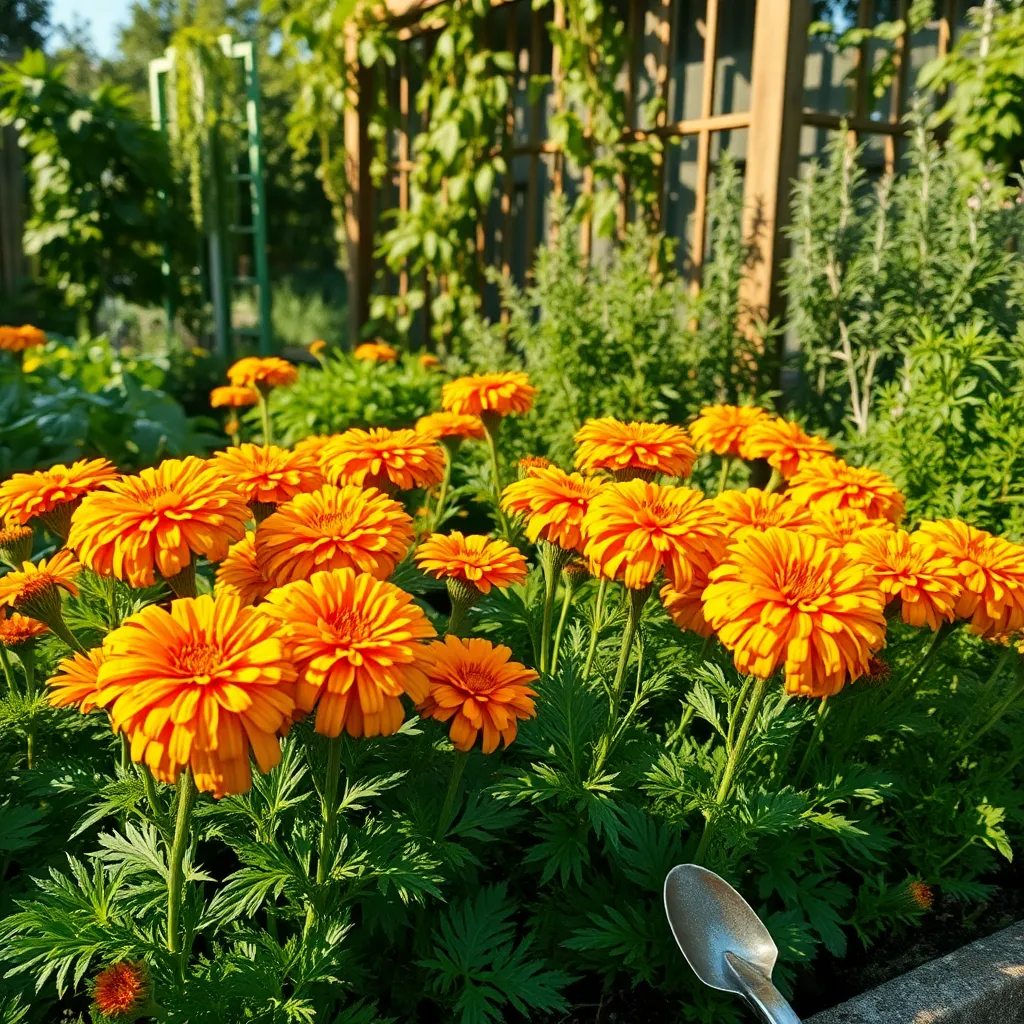
Marigolds are a quintessential summer flower known for their vibrant colors and pest-repelling properties. They thrive in full sun, making them an excellent choice for sunny spots in your garden.
To grow marigolds successfully, plant them in well-draining soil that is rich in organic matter. Water these blooms sparingly, allowing the soil to dry out between waterings, as overwatering can lead to root rot.
For gardeners looking to enhance their pest control naturally, marigolds are a top choice. The scent they emit is known to repel a variety of garden pests, including nematodes and some insects.
When planting marigolds, consider companion planting them with vegetables like tomatoes and peppers to protect them from harmful pests. Advanced gardeners might try deadheading spent blooms to encourage continuous flowering during the growing season.
Heat-Tolerant Lantana (Vibrant Color Show)
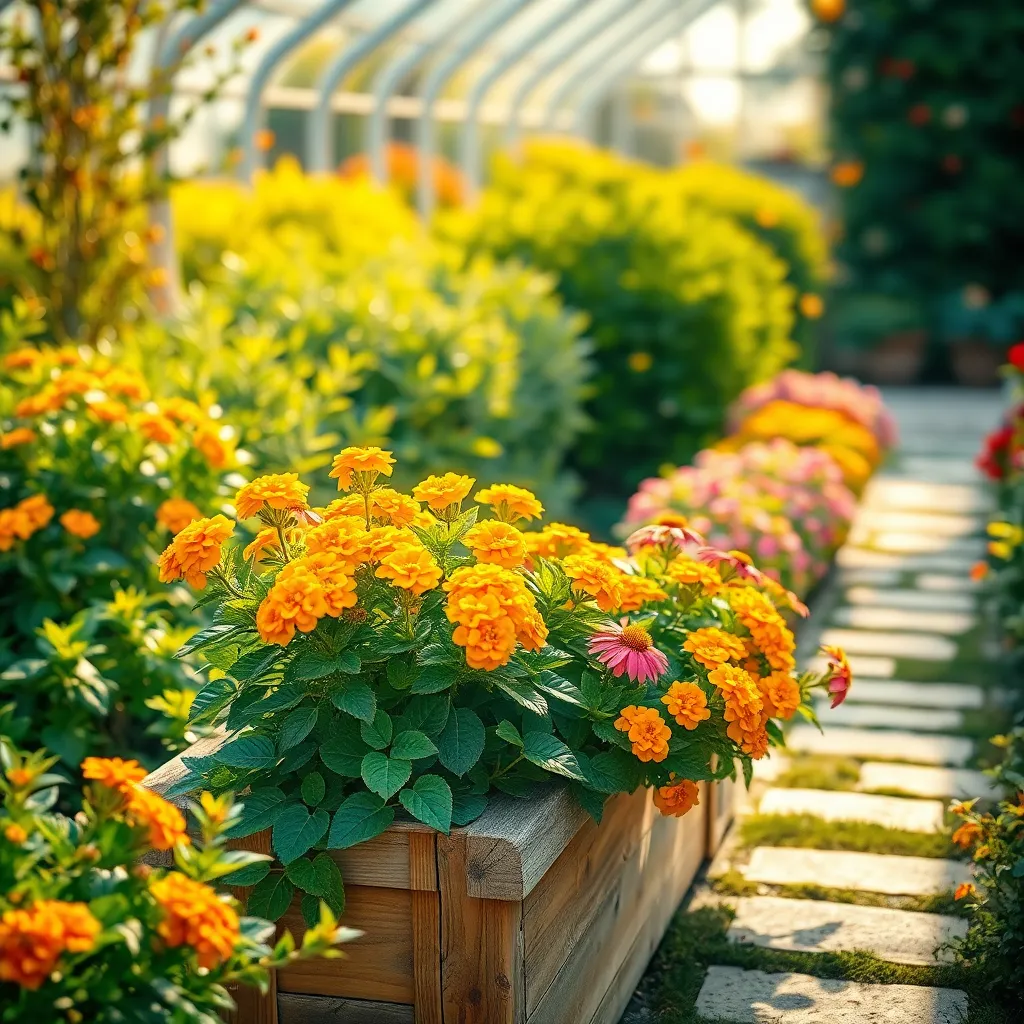
For a vibrant color show in your garden this summer, consider planting heat-tolerant lantana. These hardy plants thrive in full sun and require minimal care, making them perfect for those hot, sunny spots in your garden.
Lantanas are incredibly resilient, tolerating both drought and poor soil conditions. To get the best blooms, ensure they are planted in well-draining soil and water them deeply once a week.
Incorporating lantana into your garden is both easy and rewarding. Prune them regularly to maintain their shape and encourage more blooms, which will attract butterflies and hummingbirds.
For advanced gardeners, try experimenting with different lantana varieties to create a mosaic of colors. Mixing these varieties can lead to a stunning display of oranges, yellows, pinks, and purples, adding dynamic interest to your garden.
Self-Watering Planters (Hydration Assurance)
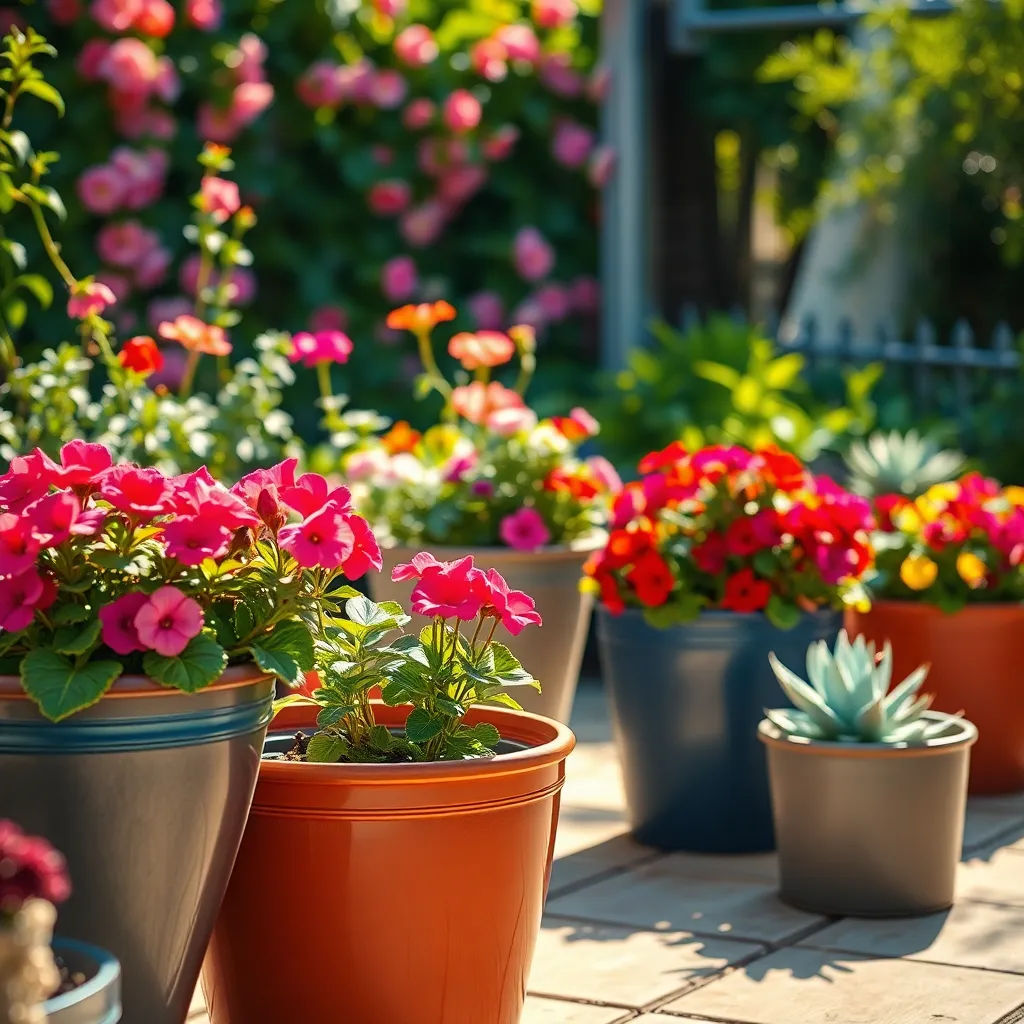
Self-watering planters are a fantastic solution for keeping your outdoor plants hydrated during the hot summer months. These planters have a built-in reservoir that gradually releases moisture into the soil, ensuring your plants receive consistent hydration without the need for daily watering.
When choosing a self-watering planter, look for one with a large reservoir to minimize refill frequency, especially for thirsty plants. Consider the size and depth of the planter to accommodate the root systems of your specific plants, ensuring they have enough space to thrive.
To set up a self-watering planter, start by adding a layer of coarse material like gravel at the base to facilitate proper drainage. Fill the planter with a high-quality potting mix that includes moisture-retentive materials such as peat moss or coco coir, which will support the capillary action needed for effective self-watering.
Monitor your plants closely during the first few weeks to understand their water needs and adjust the reservoir refilling schedule accordingly. Avoid overfilling the reservoir as this can lead to root rot; instead, top it up when the water level indicator shows it’s necessary.
Drought-Resistant Lavender (Fragrant Foliage)
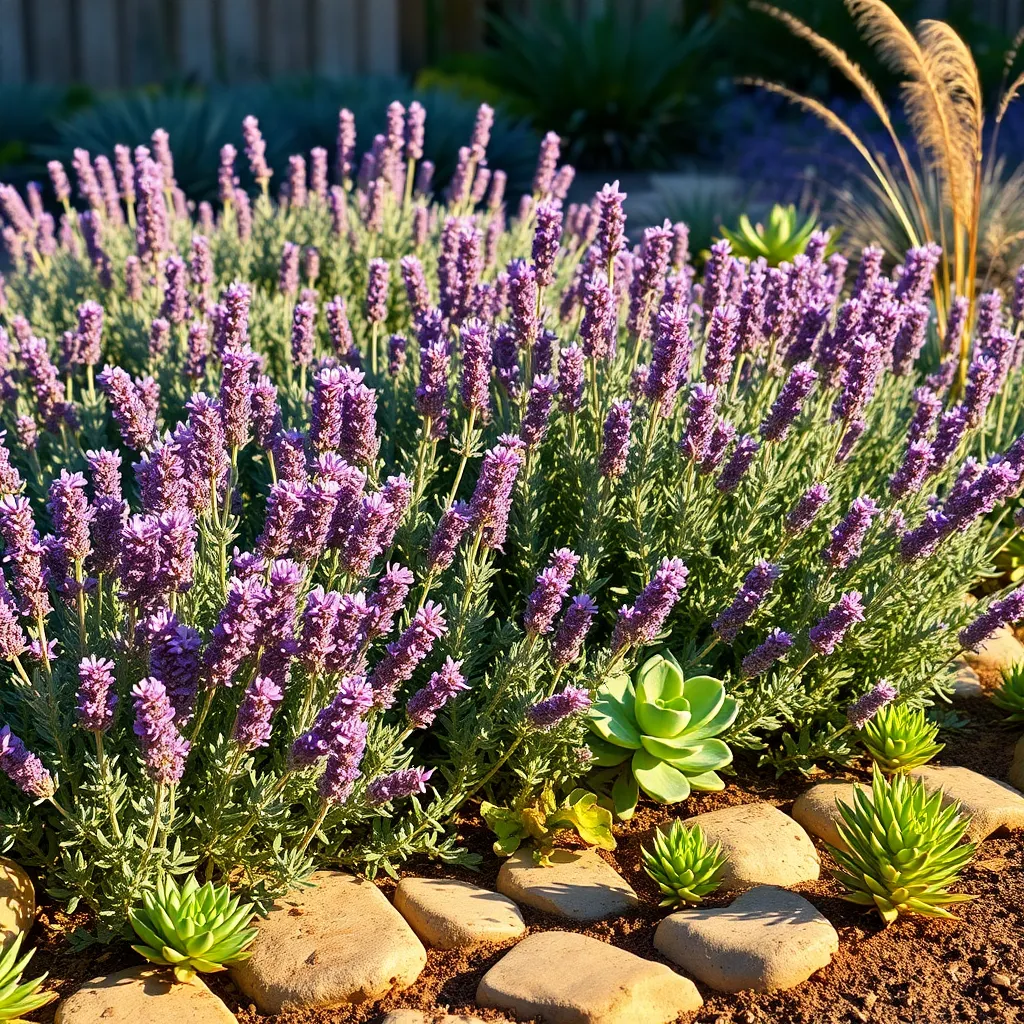
Lavender, with its lush purple blooms and soothing scent, is a perfect drought-resistant plant for summer gardens. Its ability to thrive in dry conditions makes it an ideal choice for gardeners looking to conserve water while enjoying vibrant foliage.
This resilient plant prefers well-draining soil, such as a sandy or gravelly mix, to prevent root rot. Adding a layer of mulch can help retain moisture and keep the roots cool, ensuring your lavender remains healthy and fragrant.
Water your lavender sparingly, allowing the soil to dry out between waterings, as overwatering is a common mistake. For optimal growth, place your lavender in a location that receives full sun, as it requires at least six hours of sunlight daily to thrive.
Pruning is essential to maintain the plant’s shape and encourage new growth. Trim your lavender back in early spring, removing any dead or damaged stems to promote a bushier, more robust plant.
For those looking to expand their garden, propagating lavender through cuttings is a rewarding endeavor. Simply take a cutting from a healthy stem, remove the lower leaves, and plant it in a pot with well-draining soil, keeping it moist until roots develop.
Mulching Techniques (Moisture Retention Boost)
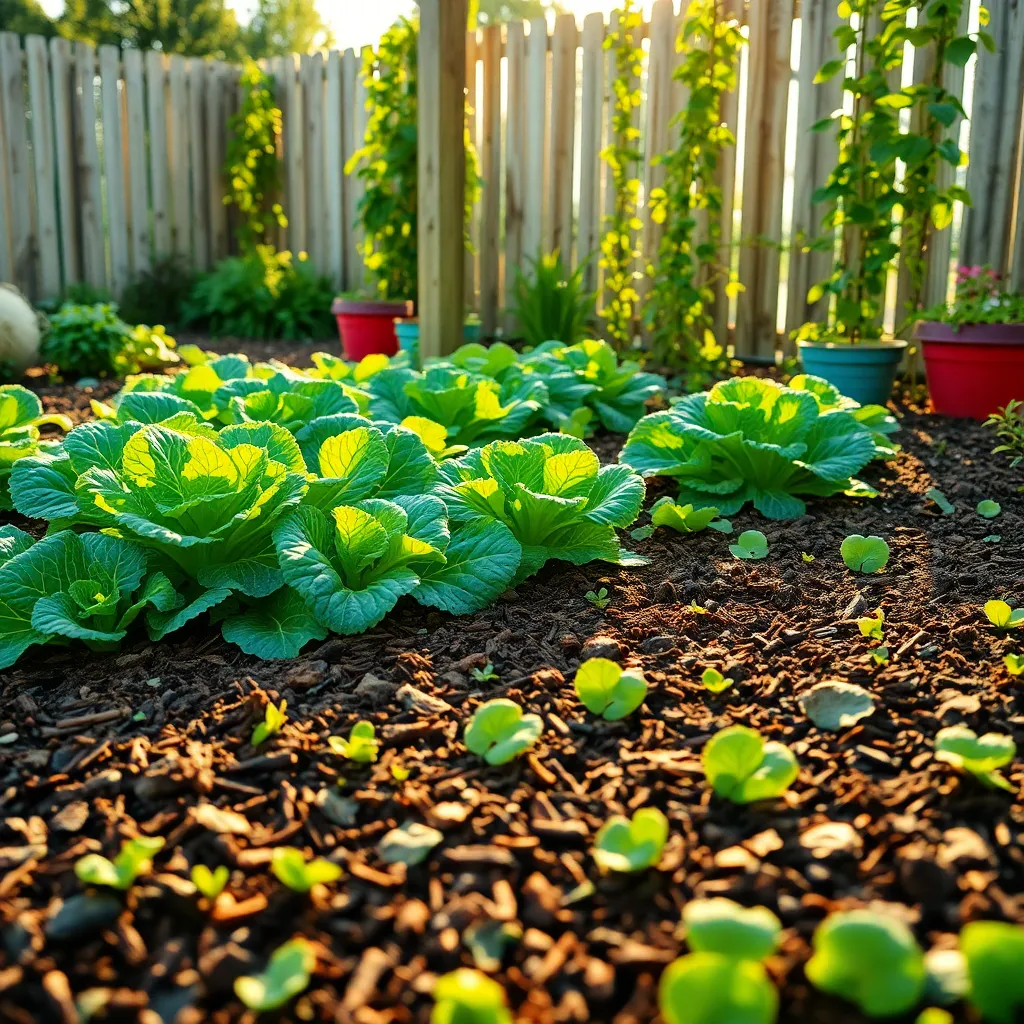
Mulching is a tried-and-true technique to boost moisture retention in your garden, especially during the hot summer months. By applying a layer of mulch, you can significantly reduce evaporation and keep your soil cool, promoting healthier plant growth.
Organic mulches, such as straw, wood chips, or shredded bark, not only retain moisture but also improve soil fertility as they decompose. For the best results, apply a 2-3 inch layer of mulch around your plants, being careful not to pile it against the plant stems to prevent rot.
Inorganic mulches like gravel or pebbles can also be effective, particularly in areas with heavy rain, as they prevent soil erosion while still conserving moisture. These types of mulches are low-maintenance and last longer, though they don’t enrich the soil as organic options do.
For those looking to conserve water, consider mulching right after watering your garden. This locks in moisture, reducing the need for frequent watering and helping your plants withstand prolonged dry spells.
Conclusion: Growing Success with These Plants
As we explored the ‘Best Outdoor Plants for Summer,’ we uncovered five essential relationship concepts: nurturing growth, embracing diversity, providing consistent care, fostering resilience, and creating a harmonious environment. These principles mirror the core of any thriving relationship, where love and attention help bonds flourish.
To bring these insights to life, consider starting a small garden with your partner, choosing plants that symbolize your shared journey. This tangible step not only strengthens your connection but also serves as a daily reminder of your commitment to growth together.
Remember, relationships, much like gardens, require ongoing attention and care. Bookmark this article to revisit these insights and inspire your path as you nurture your relationship. By keeping these principles close at hand, you empower yourself to cultivate a partnership full of life and vibrancy.
Looking ahead, know that with dedication and mutual understanding, any relationship can bloom into a beautiful, enduring bond. So, take action today, and let your love grow in harmony with nature. Save this article as your guide to relationship success, ensuring your journey is as rewarding as the destination.

